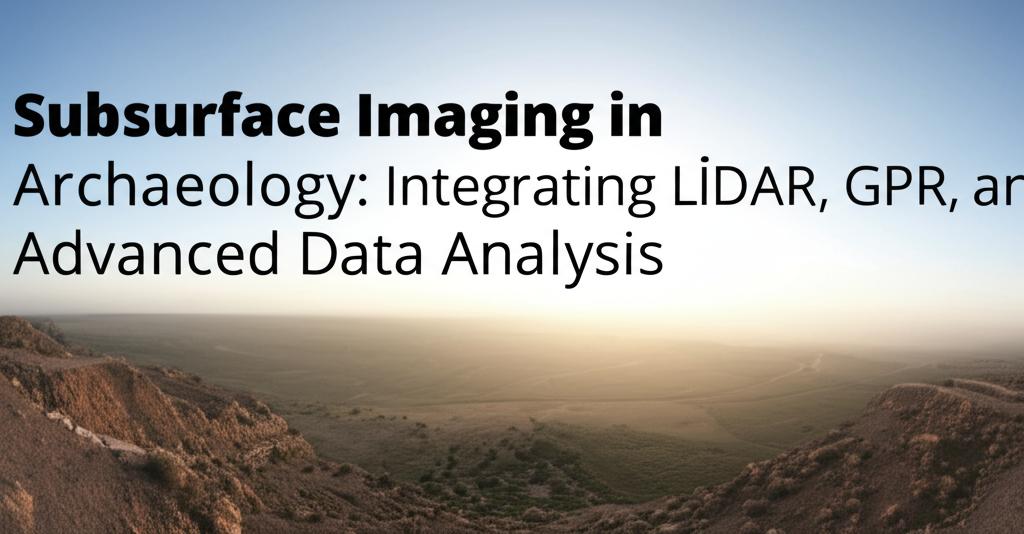Archaeological investigations are increasingly relying on a synergistic approach to subsurface imaging, integrating the strengths of Light Detection and Ranging (LiDAR) and Ground-Penetrating Radar (GPR) with sophisticated data analysis techniques. This combination allows for a more comprehensive understanding of archaeological sites, revealing hidden features both on the surface and buried beneath.
LiDAR, a remote sensing method using laser pulses to create detailed 3D landscape models, excels at identifying subtle surface and near-surface features, even those obscured by dense vegetation. It can reveal ancient roads, mounds, and agricultural terraces, providing valuable context for archaeological sites. While LiDAR itself cannot penetrate solid ground to detect deeply buried artifacts, its high-resolution topographic maps help pinpoint promising areas for further investigation with other methods.
This is where Ground-Penetrating Radar (GPR) comes into play. GPR is a geophysical technique that uses radar pulses to image the subsurface. It is an indispensable tool for obtaining detailed insights into subsurface structures and identifying potential archaeological remnants without the need for excavation. Recent advancements in GPR technology include multi-channel systems for more efficient and higher-resolution surveys, as well as advanced software for processing and interpreting the complex data collected.
The true power of these technologies emerges when they are integrated. Combining LiDAR's broad-scale surface mapping with GPR's subsurface imaging capabilities provides a more complete picture of an archaeological site. For instance, LiDAR data can create detailed digital terrain models (DTMs) that provide context to GPR findings, allowing for a better spatial understanding of a site's topography and potential buried structures. Topographic correction of GPR data using LiDAR-derived DTMs ensures consistent ground height, further increasing the accuracy of subsurface interpretations.
Advanced data analysis is crucial for making sense of the large and complex datasets generated by LiDAR and GPR surveys. This includes techniques like data fusion, which combines quantitative information from different sensors to create a more informative output than either dataset alone. Machine learning algorithms are also increasingly being used to process data, recognize patterns, and classify features, sometimes identifying structures or artifacts that might be missed by human analysts. Advanced visualization techniques, such as 3D modeling, virtual reality (VR), and augmented reality (AR), offer immersive and interactive ways to explore and interpret the combined data, enhancing understanding and communication of archaeological discoveries.
The integration of LiDAR, GPR, and advanced data analysis represents a significant step forward in archaeological prospection. This multi-disciplinary approach enhances the efficiency and accuracy of surveys, reduces the need for extensive and potentially destructive excavation, and helps preserve the integrity of archaeological sites. By combining surface and subsurface information, archaeologists can gain richer insights, improve the accuracy of feature detection and interpretation, and reconstruct ancient environments with greater fidelity. This holistic approach is proving invaluable for archaeological research, heritage management, and conservation efforts worldwide.

